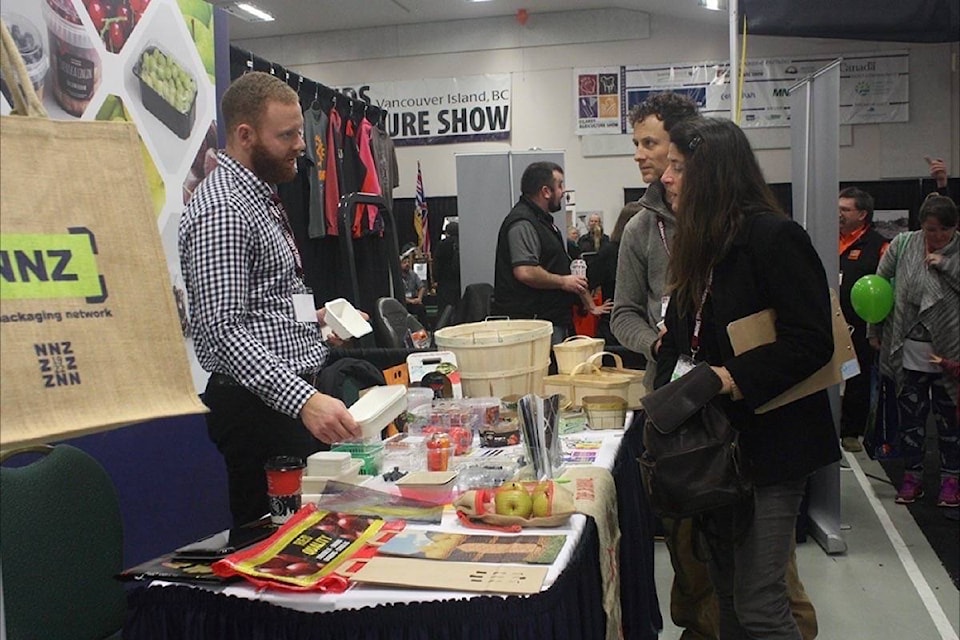By Linda Geggie
When the red currant by my garden blooms, I know its time to plant seeds. Spring has come cold and wet this year, so while I was ready to get out there I have resisted the temptation to start in the garden too early. I have learned over the years that there is no real advantage to planting early. Less seeds germinate and the ones that do, grow very slowly. Being patient and waiting a few weeks until the soils warm up a little pays off. One way that I try to get a jump on things is to start seeds in the greenhouse or to buy some “starts” (seeds that have already been sprouted) from the garden store or farm market. I call those “cheaters” and always feel a little sheepish planting them as I know I could have done that work myself. However, I get over it quickly as as I dig into some homegrown greens earlier in the season.
Many of you gardeners may have got your seeds at the various Seedy Saturday events that bring local growers and seed companies together. If you didn’t, I have some good news for you. Many of the garden stores now carry locally produced seeds cultivated to grow best with our local climate and conditions. If you can buy from local seed producers please do.
Seeds are bred in three main ways, in an open pollinated environment, through a hybrid cross or through modification of DNA in a laboratory (typically referred to as genetically modified). Most seeds that are imported and available commercially are hybrid seeds. You can tell by looking on the package and seeing “F1 Hybrids”. This means that it is a seed from two genetically different plants. Hybrid seed breeding has given us lots of interesting new vegetables over the years, however, if you tried to save their seeds they would not give you plants with similar traits to the parent plants and rarely produce an edible vegetable.
Call me cynical, but I see hybrid seeds as the dirty trick of the so-called “green revolution”. In the 1960s, companies convinced farmers across the globe who had freely saved and traded open pollinated seeds for generations, to purchase a new type of seed. These seeds required fertilizers and more water to grow, but they did have higher yields. The problem was that the farmers could not save the seeds of these plants and became dependent on the companies to go back and purchase the seeds and fertilizers every year. Farming became more expensive and many farmers lost their farms. In my travels I saw these stories unfold, personally hearing from farmers in Guatemala, India and Southeast Asia.
To add insult to injury, these same companies began to take out patents on seeds and their genetic material, taking away the right to save and trade seeds. They also bought up companies that had seed strains that had been developed over generations. Farmers buying and then replanting these seeds or sharing or reselling these seeds were making an infringement on the patents now owned by the companies. Good for the companies, not so good for the farmers.
Ninety per cent of our food begins with seed; over the last 100 years there has been significant loss of plant diversity due to this process of commercialization of seeds. In fact today 75 per cent of the world’s food supply comes form 12 plant and five animal species. Diversity in seeds, and especially locally adapted seeds, is very important to be able to ensure that we are able to continue to produce food as the climate changes and we see a predicted growth of different types of pests and diseases.
What I look for are open-pollinated seeds. These seeds are bred from crossing of plants in the same species through wind or pollinators. They have been selected over time to have stable uniform traits (like drought tolerance or good flavour) but have enough genetic diversity to adapt to changeable conditions. They can produce seeds that can be planted again. You might have heard of Heirloom seeds? These are open pollinated seeds bred over generations and are important to save and cultivate not only because they produce delicious foods but also because they are genetically diverse and insurance against changing conditions in the future.
Did you know that you could actually check out seeds from the library? The Greater Victoria Library has a seed library where you can borrow seeds and then dry seeds from your plants to return at the end of the season. From March to October the seed collection travels between the different branches throughout the CRD. A partnership between LifeCycles and the Greater Victoria Public Library, the Victoria Seed Library is a “way for hobby and beginner gardeners to share seeds and steward a regionally adapted seed collection”. A goal of the program is to “work to keep seeds in the public domain and support food security and biodiversity”. To learn more about the seed library and about upcoming free seed saving workshops you can visit gvpl.ca/seedlibrary. Want to get more involved in seed saving efforts? This year, Lifecycles is looking for growers with some experience to bulk up some of the rare and endangered seeds in their collection. If you’re interested in supporting the conservation of a seed varietal, contact diggers@lifecyclesproject.ca.
Whether you are starting tomato and lettuce planters on your balcony, to trying your first garden in the back yard, or something more; spring is here and it is time to get out there and get your hands dirty. Let’s get growing!
Linda Geggie is the executive director with the Capital Region Food and Agriculture Initiatives Roundtable and can bereached at lgeggie@cfair.ca.
